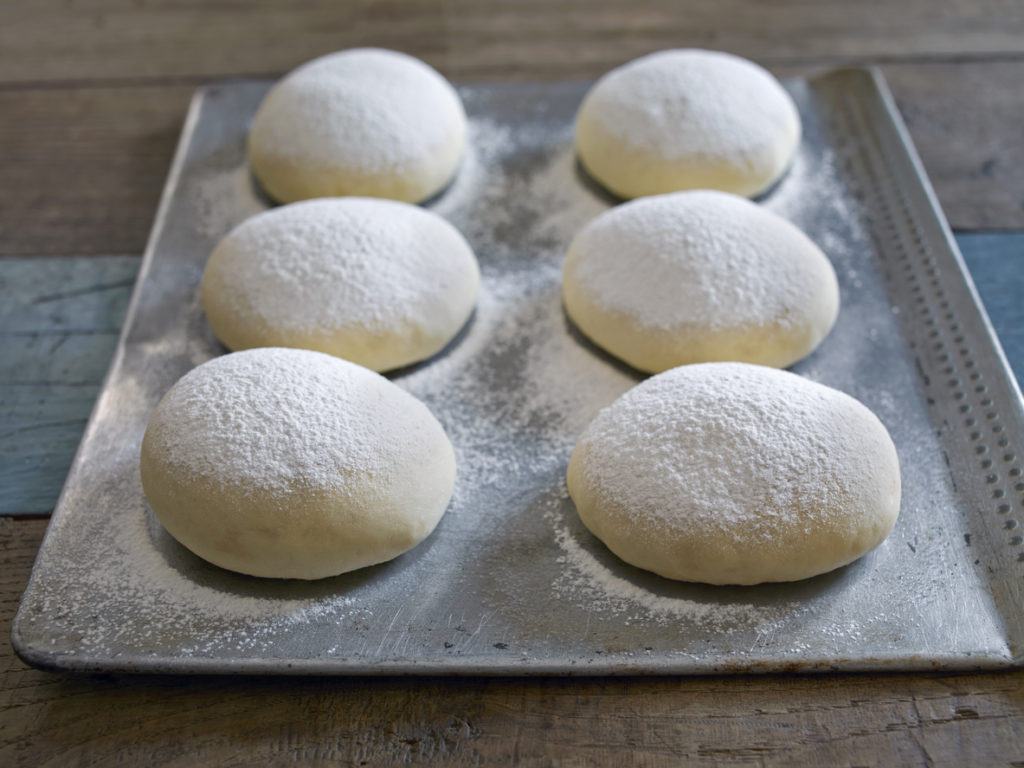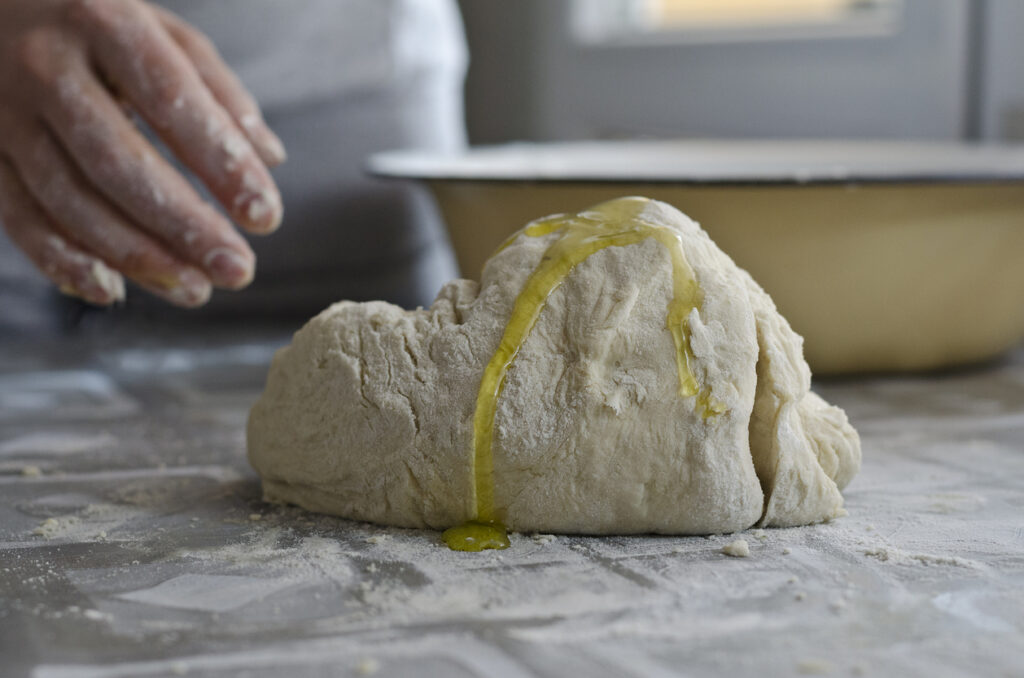- General
High fibre white, waste hot cross buns, baguette woes and fishy bread

White loaves are about to get a lot healthier. Someone’s making hot cross buns out of waste bread. France is losing its appetite for the classic baguette despite mighty efforts to halt the slide. And fish flour is a thing… we kid you not. Here’s the latest news.
Science adds essential extra fibre to white flour
In an ideal world a healthy human will eat around 30g fibre a day. Sadly most of us don’t, consuming a lamentable 15 to 18g a day per ‘average adult’. But times are changing thanks to a new white flour that has the same nutritional value as wholemeal.
Scientists have harnessed conventional plant-breeding to create the new flour, which is otherwise no different and tastes like any other white flour: totally delicious. Like wholemeal, it should help reduce the risks of cancer, diabetes and obesity.
Today’s typical white bread contains a gram of fibre per slice, with wholemeal winning by a mile at 3g per slice. The new loaves should contain 2g of fibre per slice, double the usual. And because the process avoids both gene-editing and GM, currently banned in the EU, the resulting bread should get into the shops faster, predicted for 2025.
In a world where roughly forty percent of the fibre we eat comes from cereals, and 10% of that from bread, it’s good news. According to the egg-heads we can expect “a very positive impact on the health of the general population.”
Roberts innovates waste bread hot cross buns
Have we hit a national tipping point as regards re-using waste bread? If not, it looks like we’re heading that way. As reported by The Grocer magazine, https://www.thegrocer.co.uk/new-product-development/roberts-rolls-out-ultimate-hot-cross-buns-made-with-waste-bread/601713.article Roberts is celebrating Easter with hot cross buns made from waste bread.
They’re calling the new treat ‘Ultimate Hot Cross Buns’ and they have already turned up in Tesco, containing orange oil, sultanas, candied citrus peels and a clever ‘bread ferment’ made from mis-shapen white loaves that would otherwise have been thrown out.
British households waste 4.5 million tonnes of food a year, a scandalous situation. Manufacturers are being challenged to help the public overcome this huge environmental challenge. Roberts has already trialled sending its mis-shaped bread for recycling into animal food, but felt they could do more with it.
The ferment combines a starter culture, bread crumbs, biscuit flour and warm water, fermented for 15 hours before being cooled. It contributes to an unusually silky, smooth, elastic dough, and this is just one way in which Roberts is working to achieve zero waste, creating a circular economy.
En France, le baguette is in crisis
You think about French bakeries and baguettes come to mind. But maybe not for much longer. According to The Telegraph France is losing the battle to save its legendary baguette.
It’s sad to hear that the French baking renaissance has failed to halt people’s taste for the ‘tasteless white baguette’, or so says Steven L Kaplan, a man formally decorated by the nation for services rendered to the infamous loaf. He believes it’s all down to a combination of globalisation, slipping standards, consumer complacency and mechanisation, plus the growing inability of the public in France to recognise a good quality product.
1993 saw the French government issue a decree around ‘the bread of French tradition’, made simply with flour, salt, water and leavening with no additives. At the same time millers provided better flour and Parisian bakers started to combine large-scale production with artisanal manufacture.
Despite all this Mr Kaplan believes the battle is fast being lost. There hasn’t been the expected hike in demand for top quality bread, with the majority of people uninterested in ‘such things’ and most bakeries offering ‘mediocre bread’. He is especially cross about the fact that “about three quarters continue to eat the 1960s white baguette – a bleached, deformed, unnatural, tasteless loaf.”
Ending his statement Mr Kaplan let his exasperation show, saying, “their capacity to taste has been blunted by a kind of complacency. They’re too blasé and have abandoned their taste sovereignty; instead of being deciders, they let influencers to tell them what is good.”
Fancy a slice of fishy bread?
As reported by Forbes, fish are making their way into bread in an effort to sneak in more protein.
It’s all thanks to tilapia, small freshwater fish that live in shallow streams, ponds, rivers, and lakes. They’ve always been fished in their native Africa and have long been important for aquaculture and aquaponics. Now they’re being ground up and made into flour to add to bread.
Processed bread is usually high in carbohydrates, low in protein and high on the Glycemic Index. That means it can spike blood sugar levels, not good if you’re diabetic. Plenty of research proves bread’s nutrition values are enhanced by fish protein. At the same time the initiative is helping reduce food waste, using up parts of the fish that would otherwise not be eaten but thrown away. Around 70% of the live weight of the fish is currently wasted. Using it in bread should cut the waste right down.
Six breads were created as an experiment, each with a different percentage of flour made from the Nile tilapia fish. It looks like as much as 12.17% of the total loaf can be fish flour, after which it starts tasting too fishy for comfort.
Not fishy, just delicious
We won’t send you fishy bread. But if you ask nicely we will send you a box of free artisan bread samples to test-drive. And they will blow your mind!



